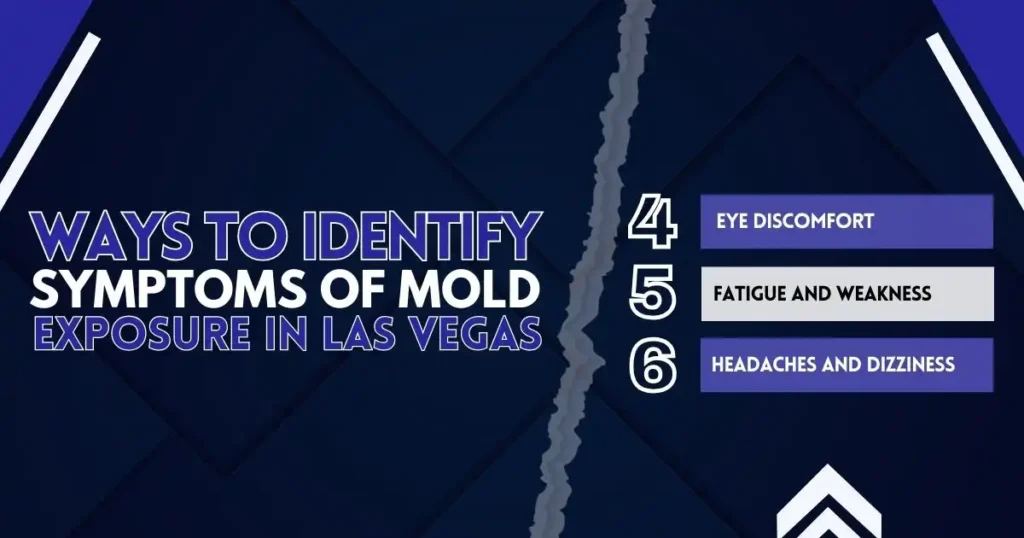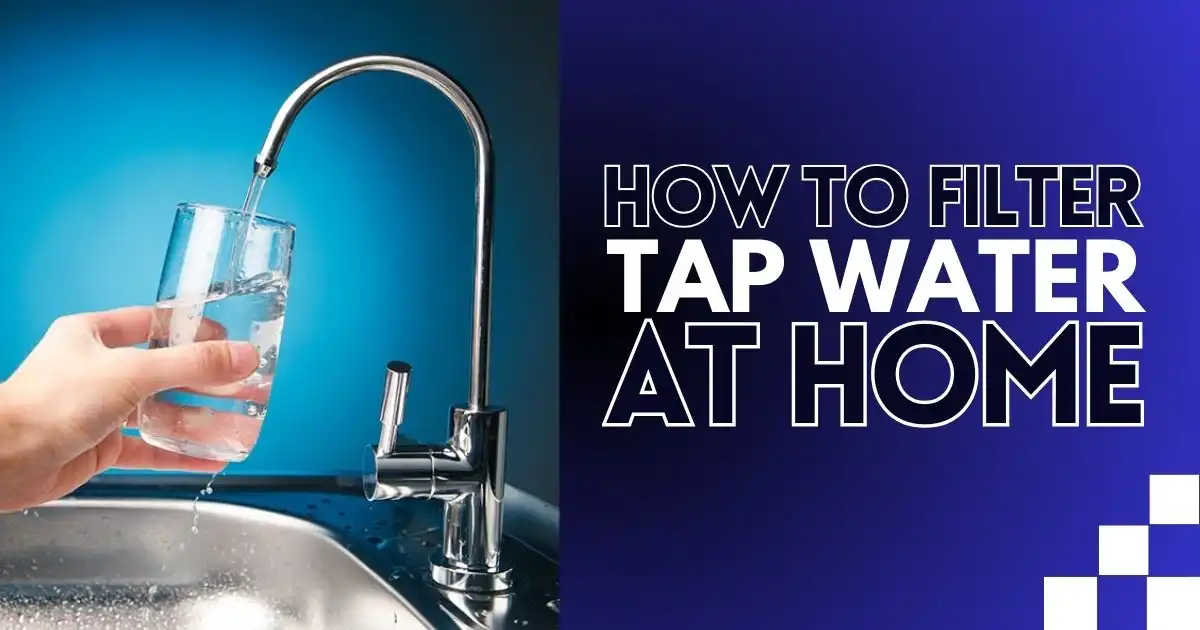Many people assume Las Vegas’ dry climate means mold is a non-issue. That assumption could be making you sick. Mold doesn’t need constant moisture to grow—just one plumbing leak, a bit of trapped humidity, or poor ventilation, and it silently starts spreading. You could be inhaling mold spores daily without even realizing it.
If you’ve been feeling drained, congested, or constantly battling mysterious health issues, it’s time to question what’s really in the air you breathe. Ignoring the possibility of mold exposure means putting your health and your family’s well-being at risk. The truth is, if you don’t look for mold, you’ll never know if it’s there.
What is Mold Exposure in Las Vegas?
Mold exposure occurs when individuals inhale or come into contact with mold spores, which can lead to health issues such as nasal congestion, throat irritation, coughing, wheezing, and skin irritation. In Las Vegas, despite its arid climate, mold can still develop indoors due to factors like plumbing leaks, roof leaks, or poor ventilation, creating environments conducive to mold growth.
Recent mold incidents in Las Vegas reveal serious risks. In October 2024, Liberty Village tenants reported black mold and plumbing issues, ignored through maintenance. In February 2025, a family won $6.6 million after toxic mold caused chronic health problems and a ceiling collapse in their apartment. Mold dangers are real.
7 Ways to Identify Symptoms of Mold Exposure in Las Vegas
Recognizing the signs of mold exposure in Las Vegas is essential for protecting your health, especially with the city’s dry climate and occasional humidity. Mold can thrive unnoticed, leading to serious health concerns if left unchecked.

1. Respiratory Issues
Persistent coughing, wheezing, or shortness of breath can be more than just seasonal allergies—they might be warning signs of mold exposure. When mold spores infiltrate indoor air, they can irritate the respiratory system, making it difficult to breathe. What seems like a minor cough today could escalate into chronic respiratory distress over time.
The Centers for Disease Control and Prevention (CDC) warns that individuals with asthma or mold allergies face an even greater risk. Exposure can trigger severe reactions, including asthma attacks and long-term lung inflammation. If breathing feels harder indoors than outside, mold could be silently compromising your health, demanding immediate attention.
2. Nasal and Sinus Congestion
A constantly stuffy nose or lingering sinus pressure isn’t always due to allergies or a cold—it could be a sign of hidden mold in your home. When mold spores circulate indoors, they irritate the nasal passages, leading to chronic congestion. If your symptoms persist despite medication, your environment might be the real problem.
The CDC confirms that mold exposure can cause nasal stuffiness and throat irritation, especially in sensitive individuals. In a 2024 case, Las Vegas tenants reported persistent sinus issues due to black mold in their apartments. Ignoring these symptoms could mean prolonged exposure to harmful spores, affecting your overall well-being.
3. Skin Irritation
Unexplained skin rashes or irritation may be more than minor issues—they could result from mold exposure. Mold spores contacting the skin can trigger allergic reactions, including redness, itching, and painful rashes, which often worsen with continued exposure.
Mold exposure can lead to skin irritation, particularly in sensitive individuals. In some cases, families have had to leave their homes due to toxic mold, experiencing symptoms like skin rashes. If you’re noticing unexplained skin issues, hidden mold in your environment could be a potential cause.

4. Eye Discomfort
Red, itchy, or watery eyes are more than just an annoyance—they can be a direct sign of mold exposure. Mold spores can irritate the delicate tissues of the eyes, causing discomfort and even more severe symptoms if exposure continues. In some cases, it may lead to persistent eye infections or swelling.
The CDC highlights that individuals sensitive to mold are particularly vulnerable to eye irritation. If you notice ongoing eye discomfort, it could be a warning sign that mold is affecting your environment. Addressing the source of exposure early can prevent worsening symptoms and protect your long-term eye health.
5. Fatigue and Weakness
Ongoing fatigue or unexplained weakness can feel like a constant drain on your energy, and it may be linked to mold exposure. Mold spores release mycotoxins that, when inhaled over time, can affect your body’s ability to function normally. If this fatigue persists, mold might be the underlying cause.
The National Institute of Environmental Health Sciences (NIEHS) confirms that prolonged mold exposure can lead to cognitive impairments, including chronic fatigue. People unknowingly suffer from these symptoms, attributing them to other causes. Recognizing mold as a potential contributor is vital for improving health and addressing the environmental factors at play.
6. Headaches and Dizziness
Frequent headaches or dizziness are more than just minor annoyances—they can be serious indicators of mold exposure. Mold spores release toxins that can disrupt your nervous system, causing persistent headaches or dizziness. If not addressed, these symptoms can intensify, severely affecting your daily life and well-being.
The National Institute of Environmental Health Sciences (NIEHS) links mold exposure to neurological symptoms, including headaches and dizziness. If you notice these symptoms becoming more frequent indoors, it’s important to consider mold as a potential cause and take action to eliminate it before it worsens..
7. Allergic Reactions
Increased allergic reactions, like sneezing or a runny nose, could signal mold in your environment. Mold spores can trigger immune responses in sensitive individuals, leading to hay-fever-like symptoms. These reactions may worsen over time if mold exposure continues, highlighting the importance of identifying and addressing the source of contamination.
Recognizing mold-related symptoms early is essential for preventing long-term health problems and addressing mold issues in your Las Vegas home. Consulting with healthcare professionals, you can determine if mold exposure is affecting your health. Mold remediation experts can help eliminate the source, ensuring a safe, healthy living space for you and your family.
Act Now to Combat Mold Exposure in Las Vegas
Mold exposure in your Las Vegas home is a silent threat to your health. Don’t wait for symptoms to worsen—take action now. Ignoring the signs could lead to serious, long-term health consequences. Your home should be a safe space, not a breeding ground for dangerous mold.
If mold symptoms are affecting you, act now! Contact us at Vegas Plumbing Pros for thorough mold inspection, removal, and water damage restoration services. We specialize in creating safe, mold-free homes, and our team is ready to tackle the issue. Reach out today for a healthier, safer living environment!
FAQS
Is mold a problem in Las Vegas?
Although East Las Vegas has a desert climate, mold can still be a significant issue. Factors like sudden humidity spikes, rainfall, or plumbing issues create the perfect environment for mold to thrive. These unexpected moisture sources can lead to hidden mold growth, even in arid conditions.
How do you detect mold exposure?
A blood test, known as the radioallergosorbent test, measures your immune system’s reaction to mold. It evaluates the level of immunoglobulin E (IgE) antibodies in your bloodstream, which reflect an allergic response to mold exposure.
How long does it take to get sick from mold exposure?
The CDC states that symptoms often appear within 2 to 9 hours of mold exposure, but some individuals may not feel unwell for weeks or months if their exposure is minimal. This highlights the importance of regularly inspecting damp, dark areas in your home for potential mold growth.
Can you recover from mold exposure?
Yes, recovery from mold exposure is possible. Symptoms usually improve once you leave the moldy environment and receive appropriate treatment. However, seeking medical help promptly is important, as prolonged exposure can lead to chronic respiratory problems or more severe health issues. Early action helps prevent long-term complications.



